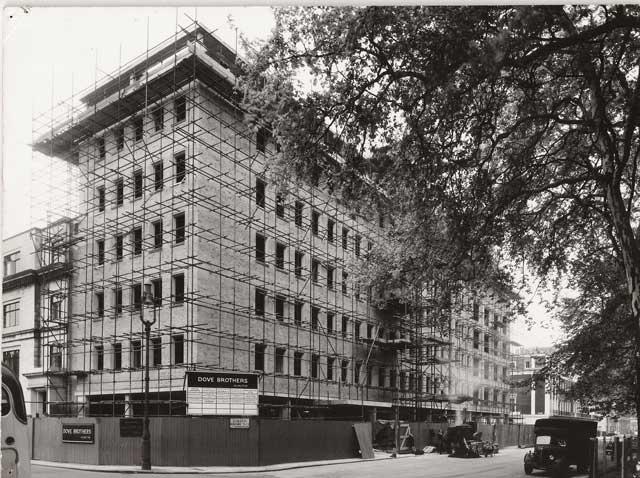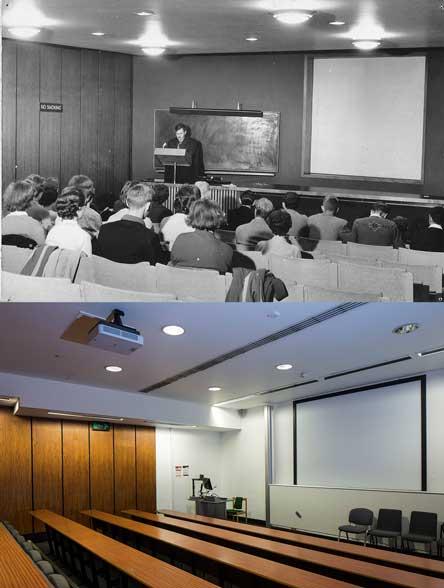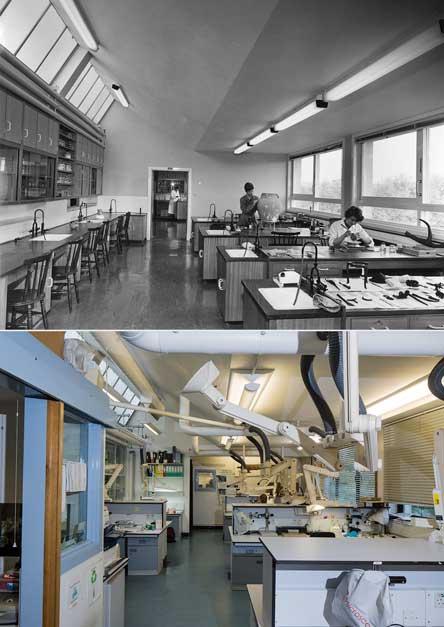The Institute of Archaeology building was designed by the architects Booth, Ledeboer and Pinckheard, built by the Islington-based construction company Dove Brothers, and formally opened in 1958. While the exterior is comparatively unchanged (Fig. 1), the following photographs from the Institute’s archives (Figs. 2-4), compare the appearance of parts of the interior in 1958 with how they look now. In most cases some original features are still visible.
All photographs are copyright of UCL Institute of Archaeology; Stuart Laidlaw took the new photographs. For further information about the Institute’s archives please contact Ian Carroll, Collections Manager.
The gallery: the modern display-cases enable the Institute to display permanently parts of its excellent collections. The cases at the far end are used for the annual display by Museum Studies students - the current theme ‘Voices of War: UCL in World War I’ was chosen to mark the hundredth anniversary of the outbreak of the First World War.
The lecture theatre: the seating has been replaced, and the slide projector (operated manually by a projectionist in a separate box behind the lecture theatre) has given way to a digital projector operated by the lecturer. A whiteboard (which can be raised in front of the projection screen) has taken the place of the old blackboard.
The conservation laboratories: perhaps these present the most striking visible changes, largely because of the new benching, and the provision of fume extraction at each individual bench-space, to accord with modern health and safety standards (conservators use a range of solvents such as acetone).




